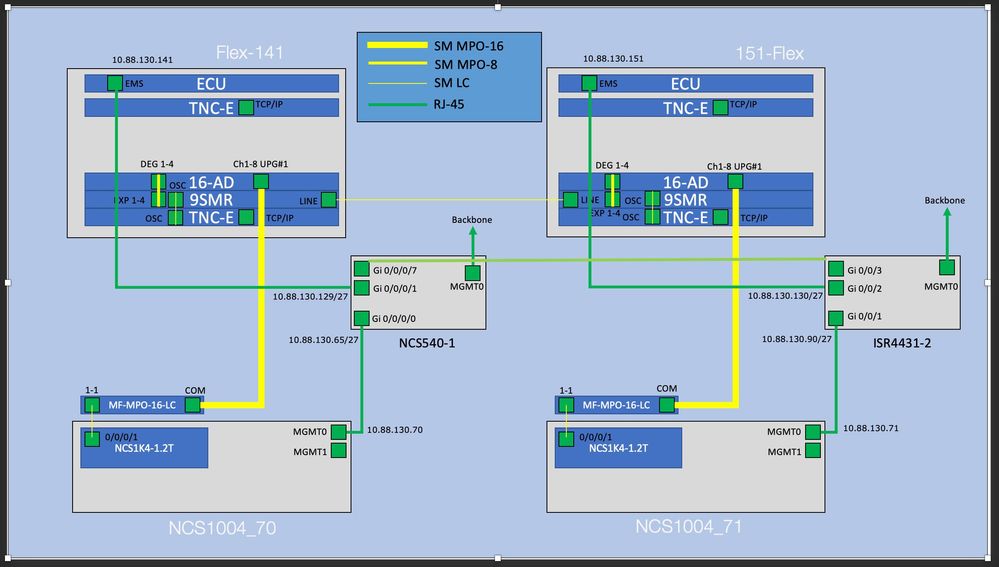Introduction
This document describes a specific combination of hardware and software that results in communication failure for LMP, which fails to build or restore WSON circuits.
Background Information
This document covers problem analysis, workaround, and the lab setup topology built to accomplish local reproduction.
When you connect an NCS1004 to an NCS2006, in order to communicate you need Link Management Protocol (LMP) information. The two devices must have IP connectivity to send Generic Multi-Protocol Label Switching (GMPLS) packets. GMPLS establishes the circuit path and parameters across the NCS2K network. Circuit creation, management, and restoration fail without IP communication between the NCS1K and NCS2K devices.
Lab Topology
 Figure shows lab topology to replicate field issue
Figure shows lab topology to replicate field issue
Problem Statement
When the customer attempts to build an LMP between the devices represented by NCS1004_70 and Flex-141, the GMPLS tunnel fails to establish. Attempts to build an LMP between NCS1004 and NCS2006 devices connected by the NCS540 and NCS55A2 fail, but other connection types succeed, including these flavors:
- NCS1004 and NCS2006 on the same subnet connected directly to each other - from the TNC front panel Ethernet port
- NCS1004 and NCS2006 on the same subnet connected by an L2 switch
- NCS1004 and NCS2006 on different subnets by another router, the ISR4431 in this instance.
Problem Analysis
- The NCS2K acts as the User Network Interface - Network (UNI-N) (server)
- The NCS1K acts as the User Network Interface - Client: UNI-C (client)
- The NCS1K receives the Resource Reservation Protocol (RSVP) message from the NCS2K
- The NCS1K does not send the RSVP RESV (reservation) message as expected, instead sends an Address Resolution Protocol (ARP) request for the NCS2K IP address
- The router drops this ARP packet as expected as the interface does not forward the packets across broadcast domains (subnets)
Workaround
After you enable proxy ARP on the NCS540 management interface that faces the NCS1K, the GMPLS tunnel comes up.
Proxy ARP enables the router interface to respond to the ARP requests where the destination has a different subnet with its own MAC address.
Proxy ARP is enabled by default in IOS XE, but not in IOS XR. So, when Cisco IOS® XR is used, this workaround must be applied if you are not in the software release that has the fix for the defect mentioned.
Expected Behavior
The NCS1004 must look up the route for the NCS2K in its route table and request ARP from the NCS540 for the next hop, then forward the packets as expected.
Resolution
The defect CSCwe46983 describes the unexpected NCS1004 behavior and provides the list of fixed versions.


 Feedback
Feedback